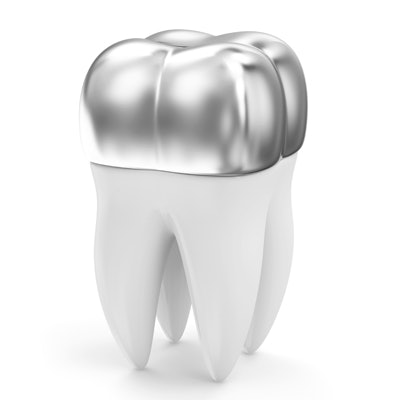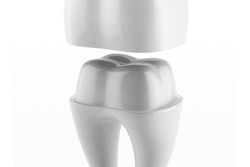
Lithium silicate ceramic has many advantages for aesthetic and minimally invasive restorations. But what factors influence the success or failure of these crowns?
Researchers from Germany researched how this material held up for up to five years in a study published in the Journal of Advanced Prosthodontics (June 2016, Vol. 8:3, pp. 194-200).
"Heat-pressed and adhesively bonded single-tooth crowns made from the second-generation lithium disilicate perform clinically excellent," wrote Drs. Fabian Huettig and Ulf Peter Gehrke from the department of prosthodontics at Eberhard Karls University, Tübingen. "Especially, their aesthetic and biocompatibility are of high quality while presenting a comparable marginal integrity for all ceramic crowns."
Excellent survival rate
“Heat-pressed and adhesively bonded single-tooth crowns made from the second-generation lithium disilicate perform clinically excellent.”
Lithium silicate ceramic performs equally well in both CAD/CAM applications and the lost-wax technique with a heat-pressed ceramic, according to previous studies. This material can be used for single-tooth restorations from inlays and partial crowns and equally well for full-mouth rehabilitation, the authors of the current study added.
In the new study, most of the crowns were luted with the composite resin Multilink Automix (Ivoclar Vivadent) or Variolink (Ivoclar Vivadent). Some were luted with the resin cement RelyX Unicem (3M ESPE). The crowns were manufactured by trained dental technicians.
Of the original 58 patients, 45 completed the study for a total of 327 crowns (176 anterior, 151 posterior; 203 upper jaw, 124 lower jaw). The patients were mostly women (31 women, 14 men) with an average age of 43 years, with a range range of 17 to 73. The patients were observed for a median of 28 months after crown placement, with a range of 4 to 51 months.
| Observed issues with lithium silicate ceramic crowns | |||
| Issue | No. of crowns affected (327 total) |
||
| Chipping | 4 | ||
| Loss of retention | 3 | ||
| Fracture | 3 | ||
| Secondary caries | 3 | ||
| Endodontic problem | 1 | ||
| Tooth fracture | 1 | ||
| Removal needed | 4 | ||
The survival rate for the crowns was 98.2% at 24 months and 96.8% at 48 months, the authors estimated. The complication rate was 5.4% at 24 months and 7.1% at 48 months. The "prevalence of complication and failure" was 4.6% (15 events on 14 crowns) in 11 patients, they wrote.
However, they noted that teeth treated with a root canal had a significantly higher complication rate of 12% (p < 0.01) at 24 months. More than 90% of all crowns showed excellent ratings for color, marginal fit, and caries at final study observation.
Technique and complications
The authors noted that six of the 14 affected restorations occurred in just four patients, all of whom were treated by the same dentist. While this dentist treated a total of five patients with 26 restorations in all, the authors emphasized that clinical handling, careful patient selection, and an "operator bias" toward one system or another are important factors to weigh when considering this treatment.
Another factor in debondings was quantity received in one treatment session. While there were only three debondings (out of 327 crowns), two were seen in one patient, who received 21 restorations within one treatment session. The other debonding took place in a patient who received treatments on all upper anteriors.
The authors noted that the rate of debondings of less than 1% was about half the expected rate of luting failures in conventional fixed restorations, which is 2%, according to previous studies.
The authors also noted that the data came from only 45 patients. However, this patient sampling had "sufficient observation time and could be regarded as "validation" of the overall estimation," they wrote.
The crowns showed excellent ratings for color, marginal fit, and caries, the authors concluded.
"The distribution and qualitative analysis of the observed events showed the importance of careful patient selection and clinical handling, especially in complex cases," they wrote.



















